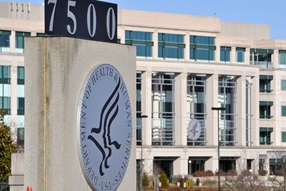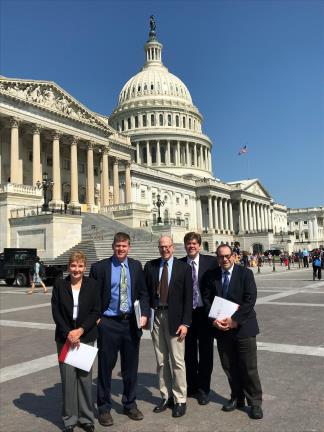In July 2023, we changed our name from AACC (short for the American Association for Clinical Chemistry) to the Association for Diagnostics & Laboratory Medicine (ADLM). The following page links to resources that were written prior to the rebranding and/or mentions events that took place prior to the rebranding and that contain mentions of the association’s old name.
 Laboratory medicine is a crucial component of quality healthcare, and Americans living in rural and underserved areas often struggle to access it. These communities often depend on outreach laboratories in hospitals and nursing facilities that operate with thin profit margins. Adequate Medicare reimbursements are crucial for these laboratories to remain financially viable.
Laboratory medicine is a crucial component of quality healthcare, and Americans living in rural and underserved areas often struggle to access it. These communities often depend on outreach laboratories in hospitals and nursing facilities that operate with thin profit margins. Adequate Medicare reimbursements are crucial for these laboratories to remain financially viable.
Medicare payments to laboratories are based on the Clinical Laboratory Fee Schedule (CLFS) which historically had varied rates across regional, state, and carrier service areas. Congress enacted the Protecting Access to Medicare Act (PAMA) in 2014 to modernize the CLFS and establish a uniform market-based payment system. To accomplish this, the Centers for Medicare and Medicaid Services (CMS) was instructed to aggregate payment data from all significant sectors of the laboratory market and set rates that accurately represent those real-world prices.
Flaws in the Data
Unfortunately, the data reporting process used by CMS was significantly flawed. Payment information was collected from less than 1% of U.S. laboratories, and of participating labs, large commercial laboratories submitted 90% of the data despite performing only 50% of tests in the U.S. These large laboratories take advantage of efficiencies of scale, allowing them to charge lower rates than other labs on a per-test comparison. This skewing of the data toward lower rates discounts more holistic data from other critically important labs. As a result, according to projections by CMS, Medicare payments to laboratories will be cut $670 million in 2018 and $3.93 billion over a decade. These cuts significantly exceed Congress’ original estimation, by almost six fold. 
The Push to Improve PAMA
The laboratory community has been actively pushing policymakers to address the flaws in PAMA, especially for the sake of patients in rural areas. This population will be the first to suffer if it becomes financially nonviable for local laboratories to provide essential services and healthcare providers are forced to outsource their laboratory services. As part of this push, the American Clinical Laboratory Association has an ongoing lawsuit against CMS asserting the agency ignored congressional intent by using flawed data to set rates.
For our part, the Association for Diagnostics & Laboratory Medicine (formerly AACC) has conducted grassroots campaigns, joined healthcare partners on letters to Congress, and provided direct feedback to federal agencies on the issue. The association's members have visited the offices of lawmakers on multiple occasions to share their concerns about PAMA and advocate for its improvement. In 2019, the Association for Diagnostics & Laboratory Medicine (ADLM) endorsed the Laboratory Access for Beneficiaries (LAB) Act, the major provisions of which were included in the fiscal year 2020 federal spending agreement after the association and the laboratory community vigorously advocated for congressional action on the issue.
Similar efforts have repeatedly delayed the next PAMA reporting period to provide more time for applicable laboratories to implement processes that will enable them to submit payment data. In 2022, ADLM joined others in endorsing the Saving Access to Laboratory Service Act (SALSA), which would require the Centers for Medicare and Medicaid Services (CMS) to modify the methodology it uses to set laboratory fees ADLM is continues to work with its allies to advocate for a fix to PAMA flaws and ensure reimbursement rates are adequate for all laboratories.
Additional Resources
Policy Brief
ADLM Comment Letters
From Other Organizations
Government Resources